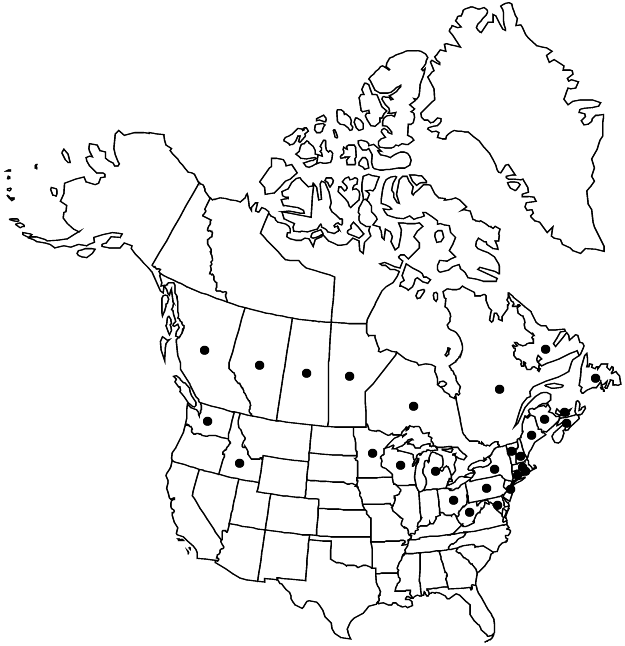Gaultheria hispidula
Fl. Boston. ed. 2, 165. 1824 ,.
Subshrubs (vinelike), creeping, mat-forming, stoloniferous; roots adventitious or fibrous. Stems repent, 10–14 cm, densely strigose. Leaf blades elliptic to oval, 0.3–1 cm, base cuneate to rounded, margins ciliate, (slightly revolute), apex acute, abaxial surface strigose, adaxial glabrous. Inflorescences axillary, solitary flowers; bracts light green, broadly lanceolate, 1.5–2 mm, exceeding sepals, sparsely strigose. Pedicels light green, 1.5–3 mm, strigose; bracteoles absent. Flowers: sepals 4, connate ca. 1/2 their lengths, white, ovate, 1–1.5 mm, hairy basally (hairs dark red); petals 4, connate 1/3 their lengths, white, 2–3.5 mm, glabrous, corolla campanulate, lobes 1.5–2 mm; filaments broadest in middle and narrowing distally and proximally, glabrous; anthers with 2 bifurcating awns, dehiscent by subterminal pores. Fruits white, 2.5–6 mm wide. 2n = 22.
Phenology: Flowering Jun-early Aug; fruiting Jul–Sep.
Habitat: Sphagnum bogs, fens and mossy, coniferous woodland forests and swamps, often on moss-covered or rotting logs
Elevation: 30-1400 m
Distribution

Alta., B.C., Man., N.B., Nfld. and Labr., N.S., Ont., P.E.I., Que., Sask., Conn., Idaho, Maine, Md., Mass., Mich., Minn., N.H., N.J., N.Y., Ohio, Pa., R.I., Vt., Wash., W.Va., Wis.
Discussion
Selected References
None.